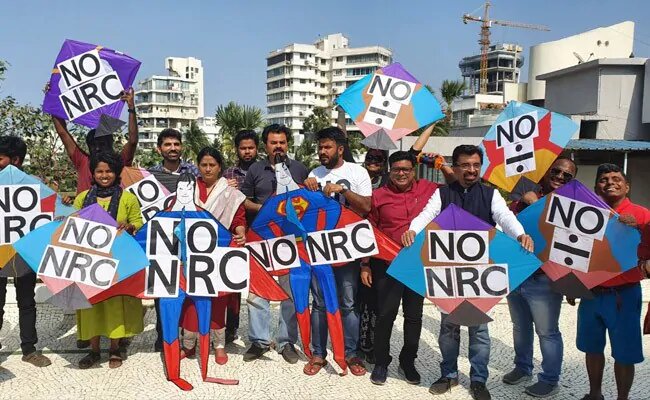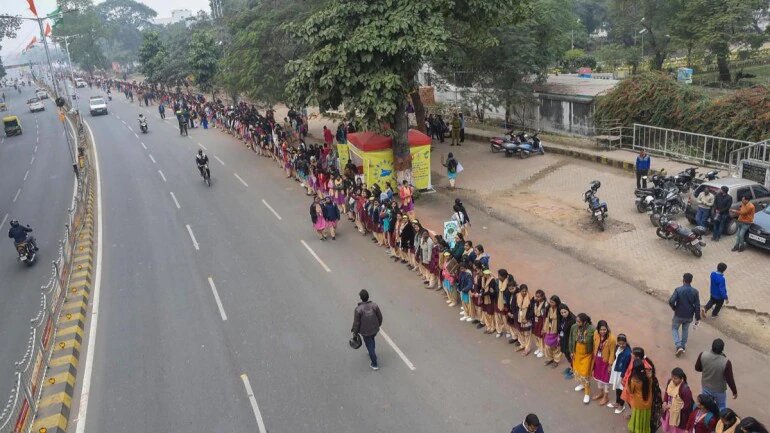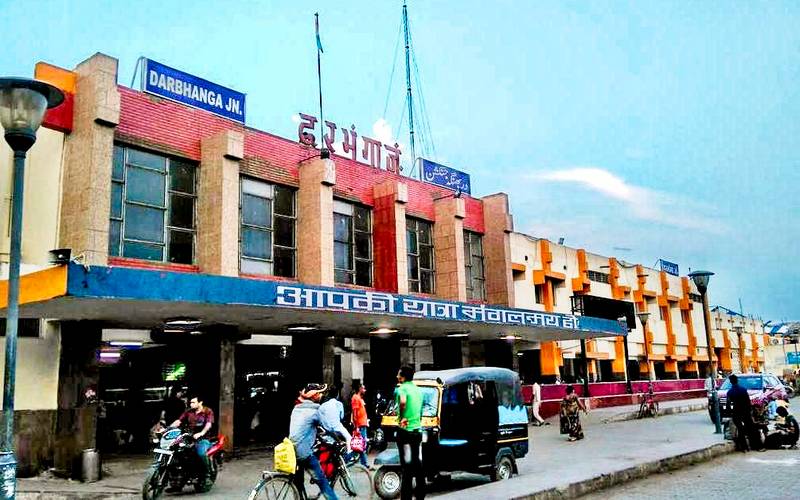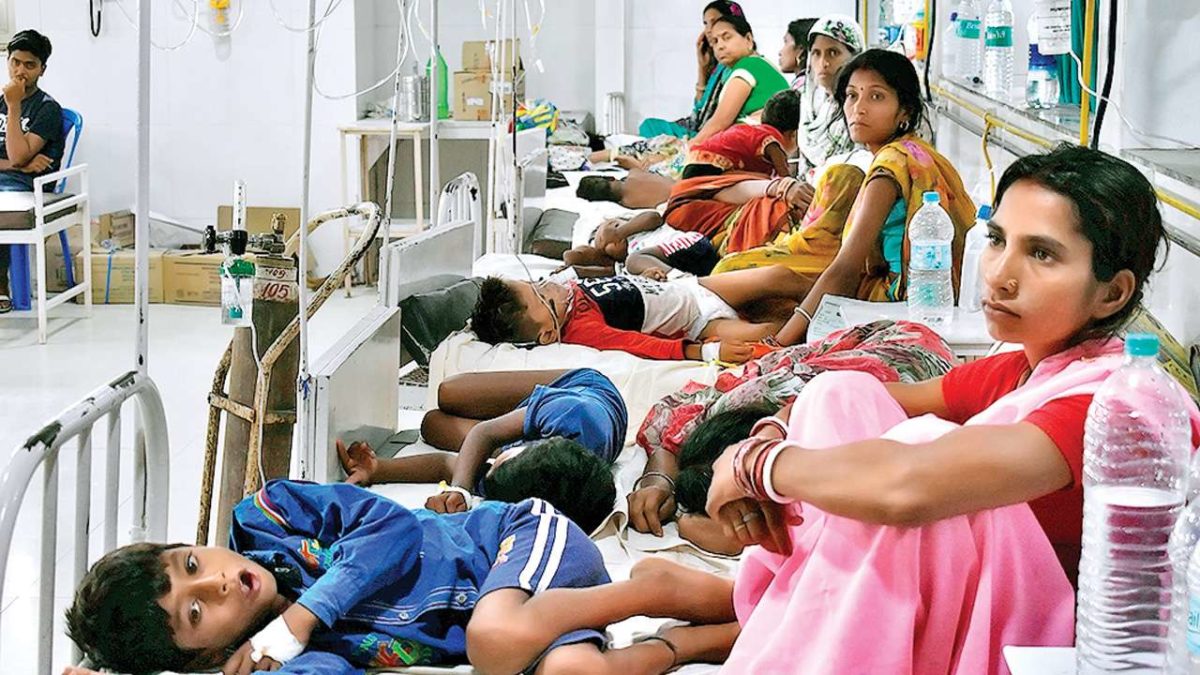Details of Tourist Places, Religious Places and its importance
Ahilya Asthan
It is famous historical temple, situated about 3 Kms. South of
Kamtaul Railway Station in Jale Block. This place is known as Ahilya gram.
There is a well known in the Ramayan about Ahilya. According to Ramayan when
Lord Ram was his way to Janakpur his feet touched a stone and it turned into a
woman who was non-else but Ahilya. Her husband Gautam Rishi cursed the Ahilya
to fun into stone. The temple is dedicated to Ahalya, wife of Gautam Rishi.
Large fairs are held every year on the occasion of Ramnavami in the Hindi month
of Chaitra and Vivah Panchami in Agrahayan. There are various other temples and
mosques in the village.
Brahmpur
The village is situated about 8 kms. away from Kamtaul and 19
kms. south east of Jogiara. The village is noted for the Gautam Kund and a
temple of Gautam Rishi, which are located very close to it. According to the
Puranic tradition Lord Brahma appeared before Gautam Rishi at this place after
the chastity of his wife, Lord Indra and Chandrama had violated Ahalya. The
village derives its name from this occurrence. In regard to the Gautam Kund, it
is believed that God Brahma himself created the tank by piercing the earth with
seven arrows, so that Gautam might not have to travel a long distance for
bathing in the Ganga. Kamtaul. The village is a rail head in Jale block. The
village has a Khadi Gamodyaog centre and a Khadi store. It is the rail head for
visitors to Ahalyasthan and Gautamsthan.
Chhaprar
The village is situated in Bahadurpur block, at a distance of
about 10 Kms. from District Headquarter. It has a temple of Lord Mahadeva on
the bank of the Kamla River around which fairs are held on the occasion of
Kartik and Maghi Purnima.
Dekulldham. The village falls in Biraul block and is noted for is large temple
of Lord Shiva. Devotees congregate here every Sunday. A large annual fair is
held on the occasion of Shivaratri.
Kusheshwar-asthan
It is an important religious place, situated about 16 Kms. east
of Singhia and 22 Kms. northeast of Hasanpur Road railway station on the
Samastipur, Khagaria Branch line of North Eastern Railway. It is noted for the
temple of Lord Shiva known as Kusheshwarasthan. Pligrims visit this place all
the year round for worship. The origin of this temple is traced to the epic
period.
The water logged fourteen villages of Kuseshwarasthan block
covering an area of 7019 acres and 75 decimals, due to their greater
ecological, faunal, floral, geomorphological and natural importance has already
been declared as Kuseshwarasthan Bird Sanctuary under Wild Life Protection Act
1972 (as amended upto 1991). The following table shows the names and status of
some important migratory birds seen in Kusheshwarasthan Bird Santuary and their
native countries.
Names
and Status of Important Migratory Birds seen in
Kusheshwarasthan Bird Sanctuary
|
|
Serial
Number
|
Species
|
Status
|
|
1.
|
Dalmatian
pelican (Pelicanus erisups)
|
Endangered,
International Council of Bird Preservation (ICBP), Bird Red Data Book
estimates only 665-1000 pairs in the world.
|
|
2.
|
Indian
darter (Anlinga rufa)
|
Species
in fered to decreasing all over the country.
|
|
3.
|
Bar-headed
goose
|
A
threatened species due to hunting, egg collecting, habitat loss.
|
|
4.
|
White
winged wood duck (Cairiva scutulata)
|
Included
in ICBP Red Data Book. Threatened by hunting and habitat loss
|
|
5.
|
Marbled
teal (Marmaronetta anqustirostris)
|
Listed
in Red Data Book V
|
|
6.
|
Baers
Pochad (Aythya baeri)
|
Listed
in Red Data Book V. Threatened by hunting and habitat loss . Due to
wellenddrainage for agriculture.
|
|
7.
|
Siberian
Crane (Grus leuogranus)
|
Western
population of this species is on the verge of extinction. About 2000 birds
exist in eastern population.
|
|
8.
|
Indian
Skimmer (Rynchops albicollis)
|
Comes
to wetland plains of India during winter from Bangladesh.
|
|
9.
|
Oriental
qoosander (Merqus qoosander)
|
Endangered
due to hunting and habitat loss.
|
Native Countries of Migratory
Birds :Nepal, Tibet, Bhutan, Afghanistan, China, Pakistan, Mongolia &
Siberia and others.
KUSHESHWARASTHAN BIRD SANCTUARY
AREA
Introduction
Wet land areas of Darbhanga district in general
andKusheshwarasthan block (Biraul Sub-division) in particular is the WINTER
CAPITAL of approx 15 rare and endangered species of MIGRATORY BIRDS. The WINGED
GUESTS coming from over eight countries swarm the vast water bodies spread in
approx 8100 hects. during winter between November and March.
Location: Longitude: 85 degree 40′ -86 degree 25′ East,
Latitude: 25 degree 53′ – 26 degree 27′ North
Height from sea level: 49 meters.
Approx 45 Kms East of Darbhanga Town.
Santuary Area: 6700 hects Chour Area, 1400 hects of Low land
area. No. of Ponds/Chours – 202 govt. 412 Private.
Name of Birds
Local Name:- Lalshar, Dighouch,
Mail, Nakta, Gairi*, Gagan*, Silli, Adhani, Harial, Chaha, Karan, Ratwa, Gaiber
(White and Black)
Biological Names:- Dalmation
pelican, Anlinga rufa (Indian darter) Barheadedgoose, Cariva Scutulata, (White
wing wood duck), Marmaroneta (Marbled teal), Baers Pochad, Sibrian Crain,
Indian Skimmer, Oriental Goosanderek. (* Rarely Seen)
Sanctuary Area in Biraul
Sub-Division (In Hect.)
|
Blocks
Name
|
Area
|
Cultivable
Area
|
High
Land Area
|
Mid
Land Area
|
Low
Land Area
|
Chour
Area
|
|
1
|
2
|
3
|
4
|
5
|
6
|
7
|
|
Biraul
|
20994
|
16600
|
1000
|
3000
|
2500
|
2750
|
|
Ghanshyampur
|
25649.08
|
19993
|
2000
|
2500
|
3000
|
3750
|
|
Kusheshwarasthan
|
23792.01
|
16000
|
600
|
600
|
1400
|
6700
|
Mahinam-Mahadeo-sthan
It is temple of Lord Shiva situated at a distance of about 5
Kms. from the Darbhanga-Biraul pucca road. Large annual fairs are held here on
the occasion of Kartik and Maghi Purnima.
Makranda
Situated about 5 Kms. south of Manigachhi railway station, the
village is known for its old temple called Baneshwaristhan.
Newri
The village likes about 13 Kms. west of the block head quarters
at Biraul and contains the remains of an ancient fortress associated with Raja
Lorick.
Nawadah Durga-sthan
It is famous temple of Goddess Durga Located on the Majkora
Nawadah Road. The place is visited by hundreds of devotee’s everyday. The
Dussehra festival is celebrated here with great enthusiasm.
Raghopur
The village is situated about 5 Kms. south of Sakri railway
station. It is noted for its earthen mound, known as Sheosingh-garh, which is
believed to cover the ruins of a building, built by Raja Shiva Singh.
Shyama Temple Shyama Temple is just one KM west of Darbhanga Railway Station. It is situated in the picturesque and peerless Lalit Narayan Mithila University. In fact it is private graveyard of Darbhanga Raj Royal family and temples have been build upon the graveyard of the ancestors of the Royal family. Shyama Temple is one of them. It was built in 1933. A huge statue of Goddess Kali is enshrined in this temple. This temple is famous not only for its grand our beauty and lively men but also for the faith that people here get there in desire fulfilled if they worship with holy heart.
Sati Asthan
Sati Asthan is situated in the famous graveyard of Subhankarpur,
which is about one km west of Darbhanga Maharaji bridge. Maharaj Rameshwar
Singh who was also a great Tantrik used to visit here daily in mid night for
his Tantra Sidhi. Late Pandit Harinandan Mishra father of Late Lalit Narayan
Mishra, Ex, Railway Minister, Government of India, also held in this premises.
Now a days people use to visit this place on every Monday and Friday.
Manokamna Temple
Manokamana Temple is situated in the University Campus just beside Nargauna Palace. This temple has constructed with the Marvel. In fact it is a Hanuman temple where a little but most beautiful statue of Hanuman is build of marvel. A lot of crowd came to visit this place every day.
Malechchhed Mardani Temple
Malechchhed Mardini temple is one km south west of Darbhanga
Railway station. It is temple of the Godden who destroy the faints. This temple
is of utmost importance for Shakti people.
Kankali Temple
Kankali temple is two km north west of Darbhanga Railway station
in the premises of Qila of Darbhanga Mahraj. This temple is of utmost importance
for Shakti people.
Kaitholic Church It was old type of Baungla Church established in 1891 where training is to given to Christen Pandit.. It is just situated one km north form the Darbhanga Railway Station. This building was demolished in the earthquake of 1897 and later on it was constructed. The pray was started in this building from 25 December 1991. The name of this church is Holy rosary Church. A lot of crowds were assembled on every Friday. Here Christmas festival is organized between Dec 25-31 and Anand Mela is organized on October 7 on each and every year. In the front of Church a most attractive symbol of Isamashi is also situated.
Bhikha Salami Majar
It is situated at one km southeast from Darbhanga Railway station on the bank of Gangasagar pond. A fair is to be organized between 12th and 16th day during the Ramzan.
Masjid at Darbhanga Tower
It is situated at two km west from the Darbhanga Railway Station
and just neat at Darbhanga Tower. It is the most attractive and religious place
for the Islam religion. A crowd people are assembled on every Friday for pray
their Namaj.
The Mazar of Makhdoom Baba
It is situated at two km northwest from Darbhanga Railway Station and just between the both universities. It is the very popular secularism place. Here daily people from Islam religion as well as Hindu religion assemble for offering their prayers.
Maharaja Laxmiswar Singh Museum
Maharaja Laxmiswar Singh Museum was established on 16th
September 1977. It is situated just west south of Darbhanga Railway Station.
This Museum can be visited every day except Monday. Its opening and closing
time is 10.00 AM and r.30 PM respectively. There is no entry fee.
Brief History
Royal family of Darbhanga is well known for its love and
affection with art and culture. Prince Subheshwar Singh gifted the invaluable
and immemorial items and Durlabh Kalakritiya in order to establish this museum.
The then District Magistrate of Darbhanga Shree Ramashankar Tiwari had also
played an important role in the establishment of this museum. This unique
museum is situated on the eastern bank of Mansarover Lake.
Salient features
There is rare collection of a number of objects and weapons made
of Gold, Silver, Tusker teeth all collection has been scientifically organized
and placed into eight different chambers.
Hall Number 1: This hall is known as Raj Singhasan Kash. Royal
throne of Maharaj Rameshwar singh jee has been placd in this Hall. This throne
is symbol of Power, wealth and dignity of the royal family. It is made of gold,
silver and precious stones. Besides royal throne, silver made Palang(BED),
Nalki and a number of other such items has also been placed in this hall which
are pleasant memory of yester years of royal family. Royal throne and Silver
Bed are unique examples of Sculptural excellence.
On the basis of design and decoration the Royal throne can be
divided into five parts.
- It is made of wood, which is square in shape. The beauty of this
part is pasting of flowers leaves and its finder brines made of ivory. The
shape and size of this flower and leaves are so accurate that it looks like
natural.
- Just above it there is a six-inch plate of silver all round the
throne elephants of small size are shown on it. Although it is small in size
but very natural in its look.
- Just above silver plate there are elephants an each corner of
the throne at the distance of two feets. There are hole in the back of these
elephants. Most probably silver rod would have been used to decorate the throne
as per desire.
- All round he throne there are square gold and silver plates a
which various types of animals has been shown in their different natural
possess. Group of elephants playing in water, roaring lions, Panther climbing
on the tree. Fighting bull and running deer are some of them.
- Precious stones were presented at every angles of the throne.
The monogram of royal family FISH is in the middle of the throne.
Hall Number 2: Hall of Metallic artifacts: A number of
attractive artifacts have shown in this hall and among these unique globe made
of copper and circular shield are can be of attraction. In these two artifacts
important events of Ramayana, Mahabharata and Krishna-Leela has been reflected.
Hall Number 3: Hall of stone idols and artifacts:
Statue made of marble and other stone made artifacts have been
shown in his hall. A circular table made of a single piece of marble is treat
to watch. A number of women have been inscribed one it in Greek – style. The
clothes hair and physique of there women reflects the clear impact of greekan
style. Just like greekan style the clothes are transparent and its fold are
such that it seems it has been blown up by air. The curly hair looks very
natural.
Hall Number 4 & 5: Ivory Hall. There is a unique collection
of the artifacts made of ivory. Mat, Net, flowers, leaves and a lot of other
things, made of ivory, are just superb in its presentation. A spulse made of
ivory is so lively that visitors get mazes after seeing it. Beside this Ivory
mad lions and sofa-set also attract the visitors very much.
Hall Number 6: Hall of weapons. Weapons of the various kings
have been shown in this hall.
Hall Number 7 & 8: Hall of wooden artifacts. These two halls
painting wooden artifacts have been shown in so natural that it works like
metal.
Chandradhari Museum, Darbhanga
This museum was established on 7 December 1957 on the north bank
of Mansarowar Lake. Late Chandradhari Singh of Ranti Dyordhi (Madhubani)
donated all the artifact and other rare objects. It was shifted in double story
building in 1974. There is no entry fee for visiting the Museum. It remains
open for public on everyday except Monday. On the basis of arrangement and
materials of the Museum it can be devided into eleven type of Halls.
Aims of the Museum
To collect, to preserve and to display the artifacts of historical,
archaeological and cultural importance of the region in the public interest as
well as to educate the students through the exhibited materials.
Galleries
On the basis of
arrangement and materials of the Museum, it is divided into eleven gallery.
Short description of same very important gallery are below:-
Glass Gallery In this gallery beautiful
objects of Baljium cutting glass are displayed.
Textile Gallery Traditional dress of
Mithila as well as dress of Royal family have been shown in this Gallery.
Miniature Painting Gallery
In this gallery rare miniature paintings of different styple and
school are displayed. Among these the paintings of Krishna leela with Gopies,
based on Geet Govind of Jaidev are peerless. Besides this the miniature
paintings of Mughal Kings and their queens in Mughal style are also of much
importance.
Modern Paintings
Water colour paintings of
modern style based on Ramayan and Mahabharta theme such as “Raja Janak
Darbar” and “Mahabharta War” can be seen here.
Stone Sculpture Gallery
Sculptures in black
Basalt stone of Hindu and Buddha religion have been shown in this gallery. Most
of the sculpture belongs to the 8th & 9th century A.D.
Wood Gallery
Various types of wood
objects having floweral design and inlay work are displayed in this gallery.
Mother of Pearls Gallery
In this gallery several
types of beautiful exhibit made art of mother of pearls can be seen. A replica
of Taj Mahal, made of mother of perals on a single piece of tuch stone is an
unique one.
Natural History Gallery
Royal Bengal Tiger,
Leopard, Bear and different types of horns of deer have been displayed in this
gallery.
Ivory Gallery
Various types of
beautiful icons and objects of ivory are displayed in this gallery.
Brass Gallery
Statues in brass, brought
from Rajnagar of Madhubani District have been shown in this gallery. These
statues are of Nepalese and Tibetan style.
Special Gallery
Eak mukhi Rudraksha
Garlands of semi preceious stones, Mico paintings, Ancient and Modern Coins
Flowers pots of Zade stone, Ivory etc are beautifully arranged and displayed.
Strong Room
In this room ring of
preceious stones, Gold coins, Pancha Janya Sankh, Dakshina Vartaya sonkh, Shree
chakra etc are will preserved.
Library
This museum has its own small library, having different types of
historical and cultural books along with same manuscripts.
Sikki Nirmit Tajmahal in
Chnadradhari Museum, Darbhanga
Bansbriksha of Darbhanga Maharaj
Darbhanga town
Darbhanga town attained the status of a city (population 1 lakh and
above) in 1961. Darbhanga is the seat of the Maharaja of Darbhanga.
Laheriasarai that is the seat of district and divisional administration is a
part of the Darbhanga town. The Raj area is a well developed and beautifully
laid-out complex of palaces, temples, offices, parks, gardens and ponds. There
are a number of palaces built by the successive Maharajas, important among them
being Nargauna Palace, Anandbagh Bhawan and Bela Palace. A number of buildings
are in the use of Sanskrit University and L.N.Mithila University. The old Raj
Library has been taken over by the Mithila University. The Maharajas of
Darbhanga have traditionally been very great patrons of art and literature and
through their magnificence have always provided encouragement to the scholars
of Maithili and Sanskrit. Mahesh Thakur who founded the Raj was a renowned
scholar of Sanskrit. Emperor Akbar who was very much impressed by Raghunandan
Jha, a scholar and disciple of Mahesh Thakur, conferred the estate upon him.
The town is noted for its trade in fish, mango and makhana. Among its educational institution are Chandradhari Mithila College, the Medical College, the Women’s College, The Engineering School and various other institutions.




